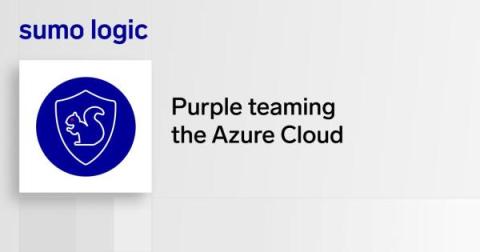Security | Threat Detection | Cyberattacks | DevSecOps | Compliance
SIEM
The latest News and Information on Security Incident and Event Management.
Learn about Sumo Logic's new MITRE ATT&CK® Threat Coverage Explorer feature in Cloud SIEM -- a convenient way to analyze your threat coverage across your organization using the MITRE ATT&CK® framework.
Tips for Building a SOC Analyst Home Lab
Do you aspire to become a standout in the SOC world? To excel, you must consistently cultivate both your technical hard skills and non-technical soft skills. No specific career path is the golden ticket; each individual’s journey to SOC stardom is a blend of conventional education and hands-on training, seasoned with vital real-world experience. A purpose-built SOC analyst home lab is one proven self-guided learning tool to sharpen your technical know-how.
Next-Level Threat Hunting: Shift Your SIEM from Reactive to Proactive
Threat hunting is proactively identifying and thwarting unusual network activity that could indicate an attempted security breach. It’s a historically manual activity, making it time-intensive and arduous. It’s no wonder, then, why most organizations don’t have the time, budget, or resources to undertake it effectively…if at all.
SIEM vs. SOAR in 2024: What's The Difference?
The threat landscape today is complex and constantly changing. Organizations require robust cybersecurity solutions to protect their networks and systems. SIEM and SOAR are two technologies that are pivotal in strengthening security operations. In this article, I’ll look at both technologies, SIEM and SOAR, to help you understand the importance of strengthening your organization’s SecOps.
How to execute an Azure Cloud purple team exercise
For folks who are responsible for threat detection of any kind for their organizations, the cloud can often be a difficult area to approach. At the time of writing, Amazon Web Services contains over two hundred services, while the Azure cloud offers six hundred. Each of these services can generate unique telemetry and each surface can present defenders with a unique attack path to handle. Adding to this complexity is the diversity of cloud workload configurations, as well as varying architecture models.
Revolutionizing big data management: Unveiling the power of Amazon EMR and Elastic integration
In the dynamic realm of data processing, Amazon EMR takes center stage as an AWS-provided big data service, offering a cost-effective conduit for running Apache Spark and a plethora of other open-source applications. While the capabilities of EMR are impressive, the art of vigilant monitoring holds the key to unlocking its full potential. This blog post explains the pivotal role of monitoring Amazon EMR clusters, accentuating the transformative integration with Elastic®.
Poshmark's security team reduces account takeover attacks with Datadog Cloud SIEM
Learn about how popular, e-commerce social marketplace platform, Poshmark, and its security team use Datadog Cloud SIEM daily to reduce account takeovers and more to save the company millions.
Unlock the Power of Google Chronicle SIEM for Your Clients
Let's face it: Managing cybersecurity for multiple clients as an MSP can feel like navigating a maze, full of pitfalls and traps. Just when you think you have one security issue managed, another one pops up.
Secure your Elastic Cloud deployment with AWS PrivateLink traffic filter
One of the security features available in Elasticsearch® Service (Elastic® Cloud) is traffic filtering. Traffic filtering enables network layer security by limiting access to the deployment from configured networks only. In addition to the security policies consisting of role based access control (RBAC) employing principle of least privilege, using traffic filtering in conjunction provides greater security.
How to Secure a REST API
Sitting at your desk, coding away with another cup of your favorite caffeine-infused beverage, you might be thinking to yourself, “it’s true what they say about no rest for the weary.” If you’re developing an app or architecting a cloud-native system, you can actually get the REST you need with the right Application Programming Interface (API). REST APIs provide a scalable, flexible, easy-to-use interface that makes developing and connecting web apps easier.











